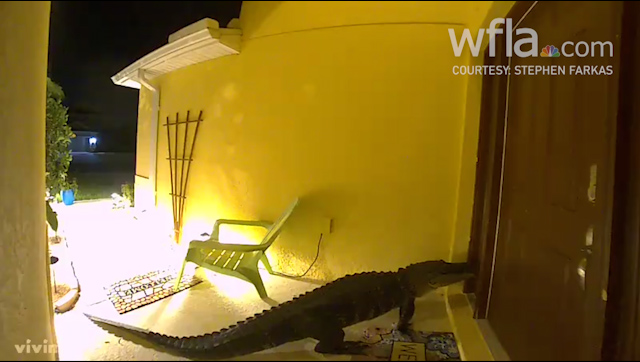TAMPA, Fla. (WFLA) – A newly-passed bill from Florida’s 2021 legislative session will allow drivers to do something they’ve been warned against for years: putting their hazard lights on when it’s raining.
The new law changes the rules for using flashing lights, but only on highways and when there’s low visibility. The bill has not yet been signed by Florida Gov. Ron DeSantis.
Hazard lights and low visibility
Going forward, if it starts raining cats and dogs while you’re driving on a roadway with a posted speed limit of 55 mph or higher, you can turn those hazard lights on. Specifically, the bill says the change is in effect “during periods of extremely low visibility.”
Current practice for hazard lights on highways and roadways is to get a citation for violating the law, though enforcement hasn’t been high. Hillsborough County law enforcement agencies issued a citation for hazard lights only 24 times in 2020. The citation was issued only 21 times in 2019. So far in 2021, there have been 16 citations issued for the rule so far.
Across the state, you’ll be able to drive on highways with your hazards on during storms starting July 1, unless DeSantis vetoes the bill.
Still, hazard lights aren’t the only things the new transportation bill tackles.
What else SB 1194 does
If the bill is signed by DeSantis, county and municipal governments would be able to abandon roads and right-of-ways in residential subdivisions and drop any maintenance obligations, should the neighborhood choose to become a gated subdivision with monitored public access.
That’s very legalese, so what does it mean in English?
Basically, if roads have limited public access and go into gated communities that require an access card or have security monitoring, the government wouldn’t necessarily have to be the ones paying to keep the roads clean and in good repair.
The law says the community development district requested the inclusion of abandonment and conveyance by written resolution to be able to turn subdivisions into gated communities. The district received approval for the conveyance by a two-thirds vote by landowners and has now executed an interlocal agreement which requires that they maintain the roads and any associated drainage, street lighting or sidewalks identified.
Going forward, should the law be signed, a reserve study of the roads, drainage, lighting, and sidewalks would have to be surveyed every five years and annual special assessments would be levied to maintain the items, as applicable, subject to municipal or interlocal agreements.
Under the proposals in the yet-to-be signed bill, the community development district would also have to pay to install, operate, maintain, repair and replace all signs, signals, markings, striping, guardrails and other traffic control devices needed on the roads, unless they come to an agreement with local government.
The shift of who pays for the maintenance could potentially be a huge cost-saving boon for local governments and shrink how many lane miles they’re responsible for maintaining, freeing up some budget to go to bigger projects to maintain infrastructure.
The bill also has sections dealing with contract awards for construction, and the bidding process for new projects, such as changing who is eligible, how you bid and how much time there is for continuing or renewing insurance policies after a change is made or new policy is issued.
There are also new guidelines for material extractions by contractors and other agencies involving clay, peat, gravel, sand and other substances that can be pulled out of borrow pits.
New rules for resolving construction or maintenance contracts and claims also made it into the legislation and creates a State Arbitration Board to handle claims by contractors or the Department of Highway Safety and Motor Vehicles.

